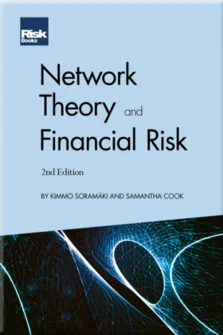Estimating unknown links: Network reconstruction
Preface
Acknowledgements
An introduction to financial networks
Creating and describing networks
Identifying important nodes: Centrality metrics
Uncovering latent structure: Clustering and community detection
Finding hidden links: Projection networks
Estimating unknown links: Network reconstruction
Fast insights: Visualising networks
Financial cartography: Network layouts
Brass tacks: Complexity reduction
Financial stability and systemic risk
Design and simulation of financial market infrastructures
Monitoring and stress testing financial market infrastructures
Financial crime and conduct risk
Financial markets
References
Chapter 2 presented several methods for constructing networks from real data, including adjacency matrices, transaction data (eg, payments or other financial transactions) and similarity measures (eg, correlation networks). It may also be the case that networks of interest do not have complete linkage data readily available. In an exposure network, for example, nodes are financial institutions and links represent bilateral exposures between institutions. It is common, however, that bilateral exposures are unobserved or unavailable, and only the marginal values, ie, the total assets (sum of outgoing link weights, or out-strength) and liabilities (sum of incoming link weights, or in-strength) of each institution, are available for constructing networks. How to reasonably “fill in the blanks” – ie, to estimate the underlying exposure network from the partial information available – has been an active area of research in recent years. This chapter provides an overview of many of the methods that have been developed for network reconstruction, as well as a discussion of how to choose from the different methods available. Squartini et al (2018) is an excellent resource for more details
Copyright Infopro Digital Limited. All rights reserved.
As outlined in our terms and conditions, https://www.infopro-digital.com/terms-and-conditions/subscriptions/ (point 2.4), printing is limited to a single copy.
If you would like to purchase additional rights please email info@risk.net
Copyright Infopro Digital Limited. All rights reserved.
You may share this content using our article tools. As outlined in our terms and conditions, https://www.infopro-digital.com/terms-and-conditions/subscriptions/ (clause 2.4), an Authorised User may only make one copy of the materials for their own personal use. You must also comply with the restrictions in clause 2.5.
If you would like to purchase additional rights please email info@risk.net











